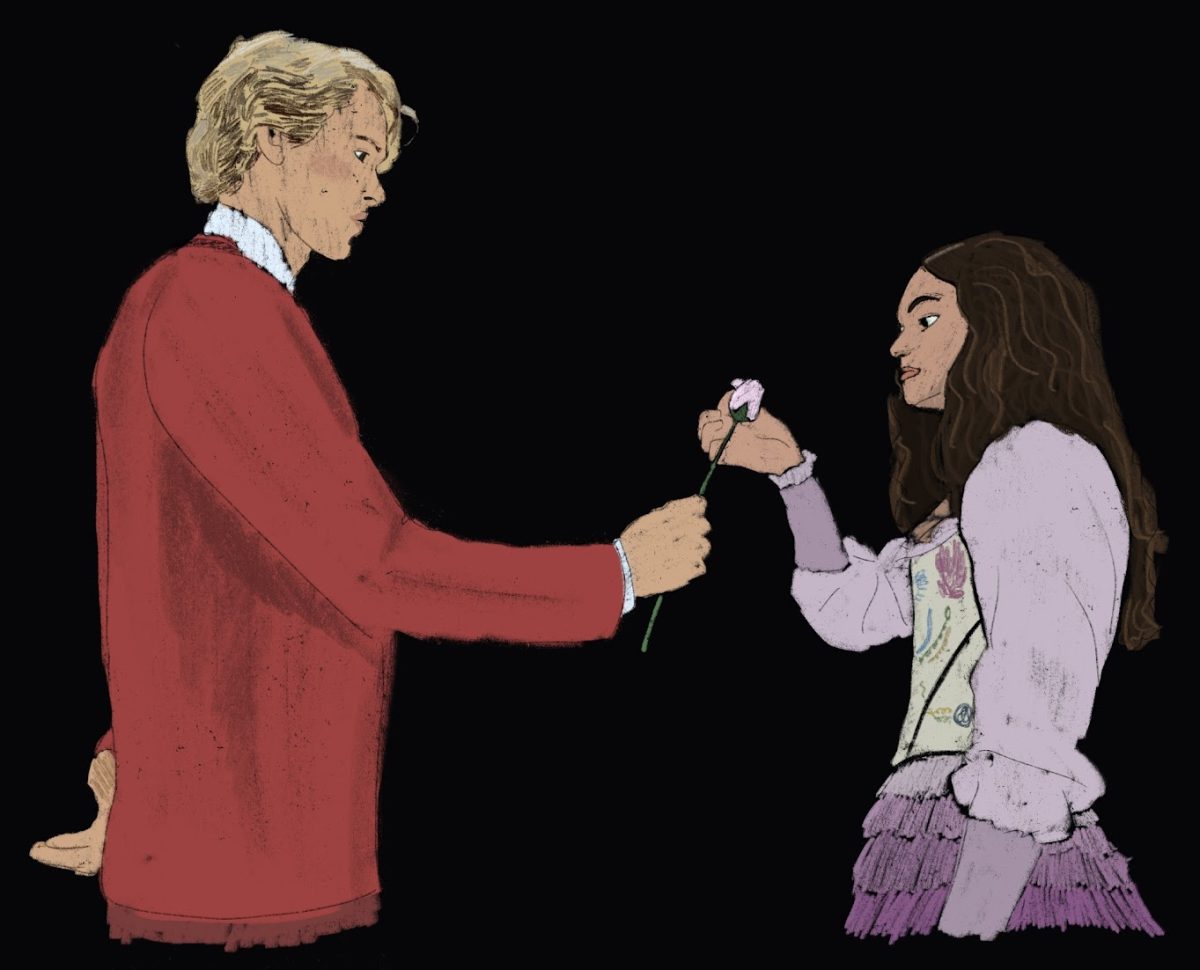The “Ballad of Songbirds and Snakes” is a cinematic treat for fans and newcomers alike, exploring the foundation of “The Hunger Games” through a flurry of characters and performances that dance the lines between good and evil.
Directed by Francis Lawrence, the film is an adaptation of Suzanne Collins’ prequel to the notorious “The Hunger Games” trilogy, which explores the teenage years of Coriolanus Snow (Tom Blyth), the original series’s antagonist. Coriolanus is mentoring a District 12 tribute, Lucy Gray Baird (Rachel Zegler), for the 10th annual Hunger Games to win the Plinth prize, a scholarship that would provide him a full ride scholarship to the Capitol university. Like the book, the film is divided into three parts: before, during and after the 10th annual Hunger Games. With a different setting for each “chapter,” viewers are given a glimpse of Panem 64 years before the trilogy takes place.
Immediately from the start, the Capitol is unrecognizable from the one in the original trilogy: effects of the “Dark Ages” are well present within the gothic-style buildings, and the blend of 1950s technology gives an odd sense of futuristic nostalgia. The movie effectively uses the old-life feel to its advantage, portraying the squalor of the districts through the tributes’ attires (barefoot, scraps of clothing, etc.) as compared to the formal attires observed in the Capitol.
There are also intricate easter eggs embedded into the movie that “The Hunger Games” fans can recognize. Lucy Gray’s dress is a prime example, where the painted Katniss and Primrose flowers on her corset are a subtle nod to the trilogy’s main characters. The ideas that Snow brainstorms for the games, such as the idea of sponsorships, mark a crucial turning point for the Hunger Games’ legacy, providing stellar insight for the audience into what is to come decades later.
While Lucy Gray and Coriolanus Snow take the spotlight, it is equally interesting to see other characters with their distinct personalities. Volumnia Gaul (Viola Davis), the Head Game Maker, is the perfect antagonist, evoking chills and feelings of immense disgust as she exhibits borderline sociopathic behavior in lieu of her “social experiments.” Lucky Flickerman’s (Jason Schwartzman) witty comments as the game host are fabulous for comedic relief during the most intense moments of the games.
Like most movies that adapt books into films, however, it is important to note that the movie has omitted or changed several key details. To engage the audience, the games purposely have a more violent and dramatic approach, while the book tries to emphasize that the games do not yet capture the audience’s attention. Coriolanus’ truly twisted nature from the books is subdued with a hint of redeemability in the movie. There seemed to be a lack of emphasis on how arrogant and self-centered young Coriolanus is, a point that is glaringly obvious in Coriolanus’s inner monologues in the book. Sejanus Plinth (Josh Andrés Rivera), Coriolanus’ classmate, is depicted as a problematic child who is blinded by his ideals, whereas in the novel, he functions as a moral compass to emphasize Coriolanus’s immoral mindset.
With an inevitable lack of depth observed compared to the book, the story seems to fall apart in the third act as key aspects of the context are cut for time, making the change in Snow’s character by the end of the film feel rushed. Nevertheless, the movie was surprisingly quite faithful to the book, considering the filmmakers had to condense 517 pages into a two-and-a-half-hour runtime.
Despite these certain shortcomings, the movie deserves praise for its natural incorporation of people from diverse backgrounds and those with disabilities. Along with Dean Casca Highbottom, who is played by Peter Dinklage, a prominent actor with dwarfism, Wovey, a tribute from District 8, is played by Sofia Sanchez, who has Down syndrome.
The soundtracks of the movie are phenomenal as well: with songs that the author herself took part in making, the tunes Lucy Gray sings will haunt the audience like no other. A blend of folk, country and Southern Isles tunes, the combination of familiar music from The Hunger Games trilogy, such as The Hanging Tree, with the dystopian setting gives the audience a sense of familiarity in an unfamiliar world. “The Ballad of Songbirds and Snakes” is a beautiful, compelling film that immerses the audience in the world of Panem once more. Puzzle pieces fall in place with subtle hints and foreshadowing that connect to the original trilogy, adding yet another layer to enrich the Hunger Games experience. With an overwhelming desire to root for a future antagonist, it is guaranteed that whoever watches this movie will most certainly be drawn into a fascinating world of fluctuating morals.




















































